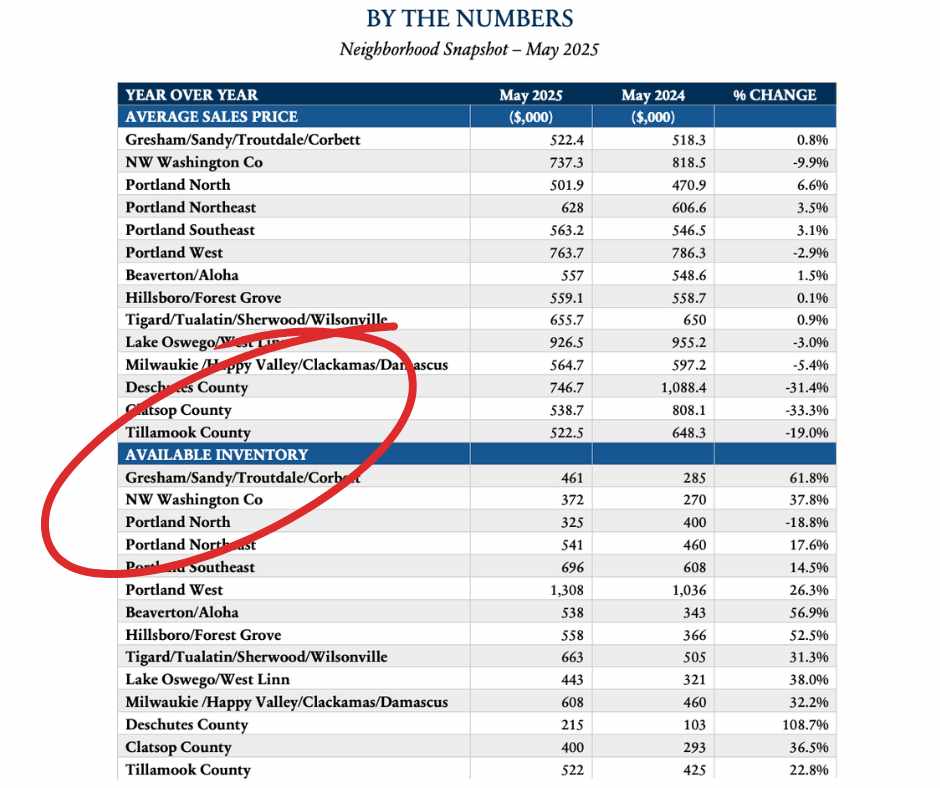If you’re thinking about buying or selling a home, one factor that can have a major impact on your experience is housing inventory—the number of homes available on the market. Inventory affects everything from pricing to how quickly homes sell, and even small changes can shift the balance between buyers and sellers.
But remember: real estate is local. Trends you hear about on the news might not match what’s happening in your specific neighborhood or price range.
Why Inventory Matters
The housing market is shaped by the classic rules of supply and demand. When there are fewer homes for sale, competition among buyers can drive prices up. On the flip side, when more homes are listed, buyers often have more negotiating power, which can lead to better deals and more flexible terms.
Short-Term Changes vs. Long-Term Trends
You’ve probably noticed that housing activity varies by season. Fewer homes tend to go up for sale during the holidays, but there are usually fewer buyers too, which keeps things fairly balanced. Spring, by contrast, often brings both a wave of new listings and renewed buyer interest.
But there are also larger patterns to watch. For instance, when inventory remains low for an extended period, prices tend to rise and stay elevated. Reversing that trend typically requires a steady increase in homes for sale.
What This Means for Buyers
In a market with limited inventory, some buyers decide to wait in hopes that prices will come down or more options will appear. Others feel the pressure to act quickly and make strong offers to beat the competition. If you’re buying, your level of motivation, financial readiness, and ability to act decisively all come into play.
Being strategic is key—especially if you’re competing with multiple buyers. You may need to be flexible on things like closing timelines or offer terms. It helps to understand what’s driving competition in your local market.
What This Means for Sellers
If there are more homes on the market, buyers will have more choices—and sellers may need to work harder to stand out. That could mean pricing your home more competitively or offering extras, like help with closing costs or a rate buydown, to attract serious buyers.
If inventory is tight, though, sellers may benefit from faster sales and stronger offers—especially if their home is priced appropriately and well-prepared for showings.
Other Factors at Play
Housing inventory isn’t the only thing influencing the market. Interest rates, job stability, and overall economic confidence all play a role in how buyers and sellers behave. For example, when mortgage rates rise, some buyers step back—but in growing areas like Southern Nevada, strong local demand can keep the market active even when other regions slow down.
Right now, we’re seeing an increase in homes coming to market. If you’re selling, that means paying close attention to pricing and being prepared for more negotiation. New home builders offering incentives can also create more competition, so it’s worth knowing how your listing compares.
The Takeaway
Whether you’re buying or selling, understanding housing inventory gives you an edge. And while national trends can offer some insight, the most important information is what’s happening in your area—your neighborhood, your school zone, your price point.
I help clients stay informed so that they can make confident decisions in today’s shifting market.
 Facebook
Facebook
 X
X
 Pinterest
Pinterest
 Copy Link
Copy Link
